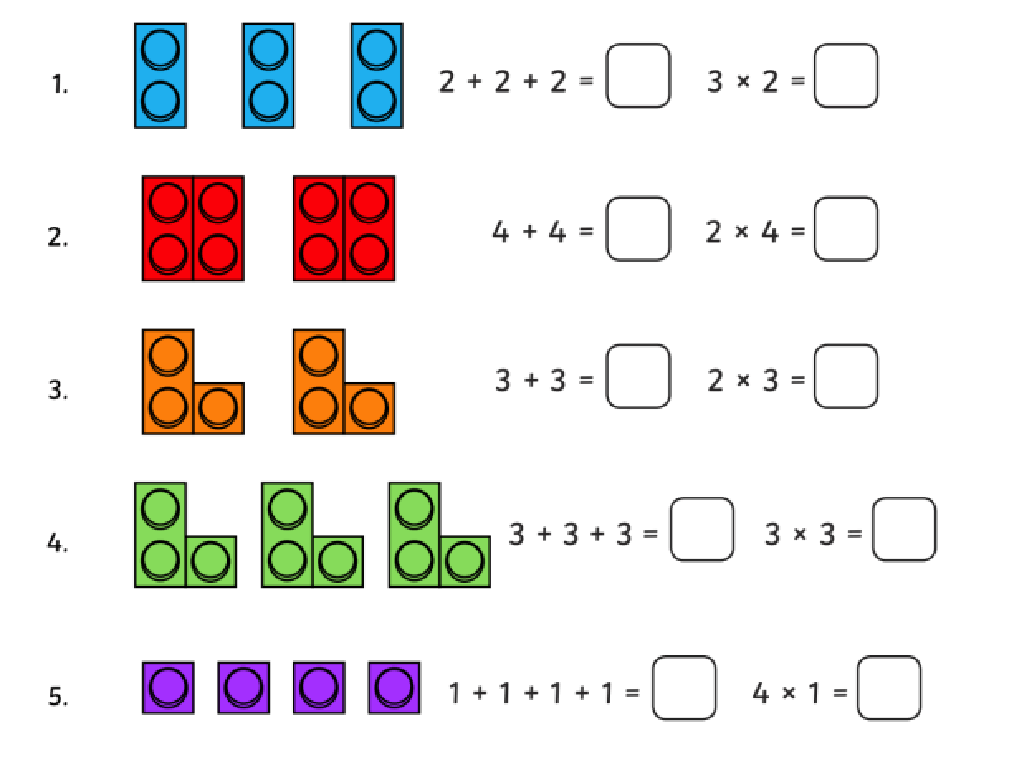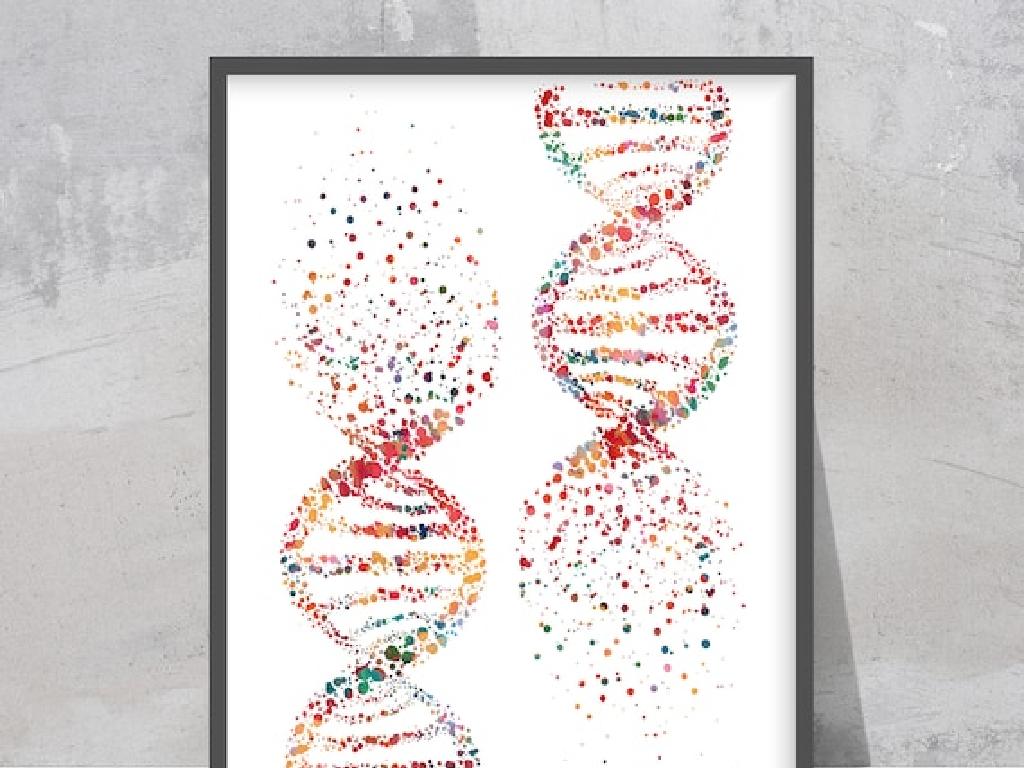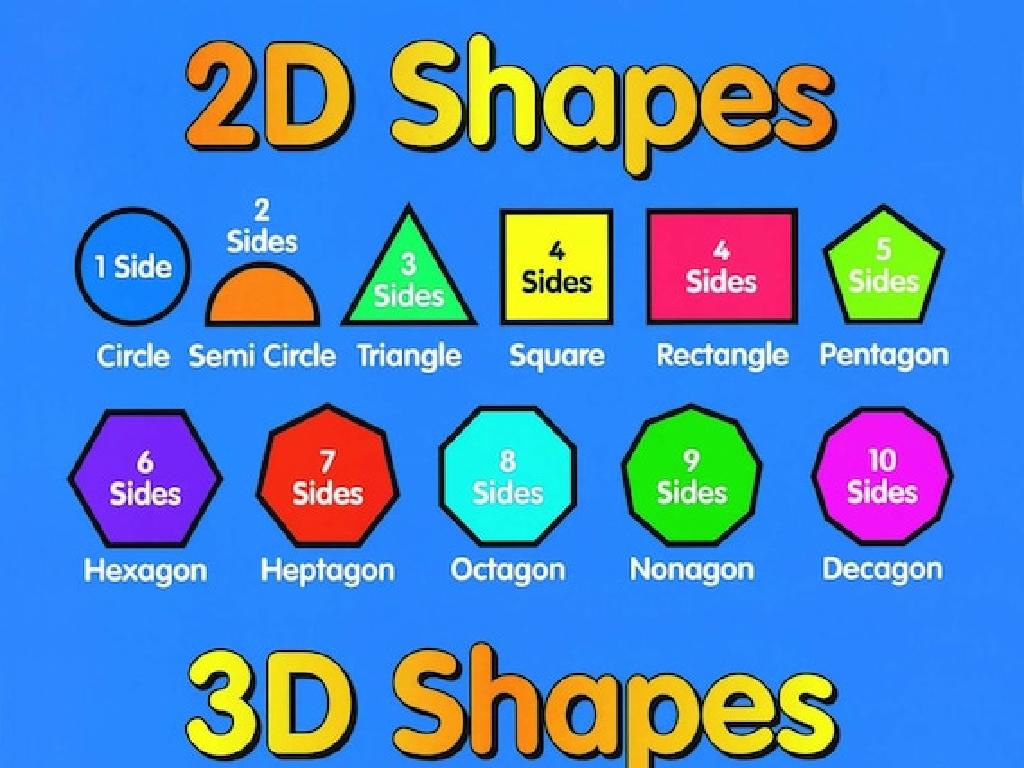Mixed Customary Units
Subject: Math
Grade: Seventh grade
Topic: Units Of Measurement
Please LOG IN to download the presentation. Access is available to registered users only.
View More Content
Introduction to Mixed Customary Units
– Understanding measurement units
– Basic building blocks for quantifying physical quantities.
– The necessity of different units
– Different units measure various scales from small to large distances.
– Examples: inches, feet, yards, miles
– Smaller to larger: 12 inches in a foot, 3 feet in a yard, 1760 yards in a mile.
– Converting between units
– Use conversion factors to switch between units, like 1 foot = 12 inches.
|
This slide introduces the concept of mixed customary units, which are used to measure length in the United States. Start by explaining that units of measurement are the standards used to measure physical quantities. Discuss why we need different units, such as convenience and precision for different scales of measurement. Provide examples of customary units and their relationships, such as 12 inches in a foot, 3 feet in a yard, and 1760 yards in a mile. Emphasize the importance of understanding how to convert between these units for accurate measurement and comparison. Encourage students to think of situations where they would use different units and to practice conversions.
Customary Units of Length
– Comparing inches, feet, yards
– 12 inches in a foot, 3 feet in a yard
– Appropriate usage of each unit
– Inches for small objects, yards for fields
– Unit conversion using a chart
– Use the chart to convert: 24 inches = ? feet
– Practice with real-world examples
– Convert your height from feet to inches
|
This slide introduces students to the customary units of length commonly used in the United States, including inches, feet, and yards. It’s crucial to help students visualize and remember the basic conversions: 12 inches in a foot and 3 feet in a yard. Discuss when it’s appropriate to use each unit by giving relatable examples, such as using inches to measure a pencil’s length and yards for the length of a football field. Provide a conversion chart and guide students through examples, showing how to convert from one unit to another. Encourage students to bring in real-world examples for practice, such as measuring items in the classroom or their heights, to reinforce the concept.
Customary Units of Weight
– Understanding ounces, pounds, tons
– Smallest to largest: ounces, pounds, tons. E.g., a pencil is about an ounce.
– Estimate weights of everyday items
– Guess the weight of a backpack or a textbook.
– Convert ounces to pounds
– 16 ounces equals 1 pound. How many pounds are 32 ounces?
– Practice with real examples
– Use common objects to apply conversion.
|
This slide introduces students to the customary units of weight commonly used in the United States: ounces, pounds, and tons. Start by explaining each unit and their relationship. For instance, there are 16 ounces in a pound and 2,000 pounds in a ton. Engage the class by asking them to estimate the weight of familiar objects, which helps them relate to the concept practically. Then, demonstrate how to convert ounces to pounds using the fact that 16 ounces equal 1 pound. Provide students with a variety of objects and their weights in ounces, then ask them to convert these weights to pounds for practice. This exercise will help solidify their understanding of weight conversion.
Customary Units of Capacity
– Explore fluid ounces, cups, pints, quarts, gallons
– Smallest to largest: fluid ounces, cups, pints, quarts, gallons
– Apply units to cooking and baking
– Recipes often require different capacity units
– Activity: Measure various liquids
– Use measuring tools to gauge different volumes
– Understand unit conversions
|
This slide introduces students to the customary units of capacity commonly used in the United States, with a focus on practical application in cooking and baking. Begin by explaining each unit from smallest to largest, providing visual aids or physical measuring tools if possible. Discuss how these units are used in real-life scenarios, such as following a recipe. The class activity involves hands-on measurement of various liquids to reinforce the concept of volume and unit conversions. Encourage students to understand how to convert between units, for example, how many cups are in a pint, or pints in a quart, etc. This practical knowledge will aid them in everyday tasks and enhance their understanding of proportion and scale.
Understanding Mixed Customary Units
– Purpose of mixed units
Mixed units provide precision in everyday life, like in construction or cooking.
– Mixed units in cooking
Recipes often use mixed units, like cups and tablespoons.
– Converting mixed units
To convert, use unit ratios: 1 cup = 16 tablespoons.
– Practice with real examples
|
This slide introduces students to the concept of mixed customary units, which are often used in everyday situations for greater accuracy. For instance, in cooking, recipes might require 1 cup and 2 tablespoons of an ingredient, which are mixed units. It’s crucial for students to understand how to work with these units, especially when a single unit of measurement is needed. Teach them the conversion ratios between units and provide practice problems where they convert mixed units to a single unit, such as turning 1 cup and 2 tablespoons into just tablespoons. This will help them with precision and understanding the practical use of math in daily life.
Adding and Subtracting Mixed Units
– Steps to add mixed units
– Convert to smallest units, add, convert back
– Steps to subtract mixed units
– Convert to smallest units, subtract, convert back
– Class practice: solve problems
Solve provided problems using the steps learned
– Understanding unit conversions
|
This slide introduces the methods for adding and subtracting mixed customary units, which is a vital skill in measurement. Start by explaining the importance of converting all units to the smallest ones mentioned in the problem. After conversion, perform the addition or subtraction, then convert the result back to mixed units. Provide students with a variety of practice problems and guide them through the process step-by-step. Encourage them to explain their reasoning and the steps they take. For the class activity, ensure that each student has a chance to solve problems and discuss their solutions with the class. This will help solidify their understanding and ability to work with mixed units.
Multiplying and Dividing Mixed Units
– When to multiply/divide mixed units
– Multiply for total quantity, divide for unit conversion
– Examples: Cooking and Buying in bulk
– Cooking: Double a recipe for 8 to serve 16, Buying: Calculate price per pound when buying a bag of apples
– Class practice with mixed units
– Work through problems involving ounces, pounds, gallons, and quarts
– Solving real-world problems
|
This slide introduces the concept of multiplying and dividing mixed units, which is essential when dealing with real-world scenarios such as cooking or purchasing items. Start by explaining when to use multiplication (e.g., to find total quantities) and when to use division (e.g., to convert between units). Provide concrete examples like adjusting recipes for more people or determining the unit price of items when buying in bulk. During class practice, give students a set of problems that require them to apply these concepts to mixed units, reinforcing their understanding through hands-on experience. Encourage students to discuss their problem-solving strategies and how these skills can be applied in everyday situations.
Real-World Application: Mixed Customary Units
– Apply mixed units in daily life
– Group activity: Party planning
– Organize groups, plan a party, list items with mixed units like pounds, ounces, gallons
– Use a mixed-unit shopping list
– How do different units like lbs and oz work together on a list?
– Discuss the role of mixed units
– Share thoughts on why understanding mixed units is practical
|
This slide aims to show the practicality of mixed customary units in real-world scenarios. The group activity involves students working together to plan a party, which requires them to handle a shopping list with mixed units such as pounds for weight and gallons for volume. This will help them understand how different units are used in everyday contexts, like grocery shopping or cooking. The discussion part of the slide should encourage students to think about and articulate how mixed units facilitate daily tasks and why it’s important to understand how to convert between them. Provide examples such as recipes that call for ingredients in different units or measuring different items when packing for a trip.
Class Activity: Mixed Units Scavenger Hunt
– Find items with mixed units
– Record and convert the units
– Use rulers, scales for accurate measurements
– Share findings with the class
– Reflect on the activity
– Discuss the importance of unit conversion
|
This interactive class activity is designed to help students apply their knowledge of mixed customary units in a practical setting. Students will search for items within the classroom that involve mixed units, such as a book’s length in inches and weight in pounds. They will then record these measurements and work on converting them into different units, reinforcing their understanding of unit conversion. After the scavenger hunt, students will present their findings to the class, allowing them to practice their communication skills and learn from each other’s discoveries. As a reflection, discuss why it’s important to understand different units and how to convert them, which is a valuable skill in everyday life. Possible activities include measuring the length of different objects and converting inches to feet, weighing objects and converting ounces to pounds, or finding liquid volumes and converting cups to pints.
Conclusion: Mastery of Mixed Customary Units
– Recap: Mixed Customary Units
– Accuracy is key in measurements
– Precise measurements are crucial in real-world applications.
– Homework: Conversion worksheet
– Complete the provided worksheet on converting between mixed units.
– Practice makes perfect
– Consistent practice will solidify your understanding of unit conversions.
|
As we wrap up today’s lesson on mixed customary units, remember that understanding and accurately converting between these units is essential in many aspects of daily life, from cooking to construction. For homework, complete the worksheet focusing on converting and calculating mixed units to reinforce what we’ve learned. This practice will help ensure that you’re comfortable with these concepts and can apply them correctly. Accuracy in measurement is vital, as even small errors can lead to significant problems in real-world scenarios. Encourage students to take their time with the worksheet and to check their work carefully.





/civil_war_history_materials.jpg)
